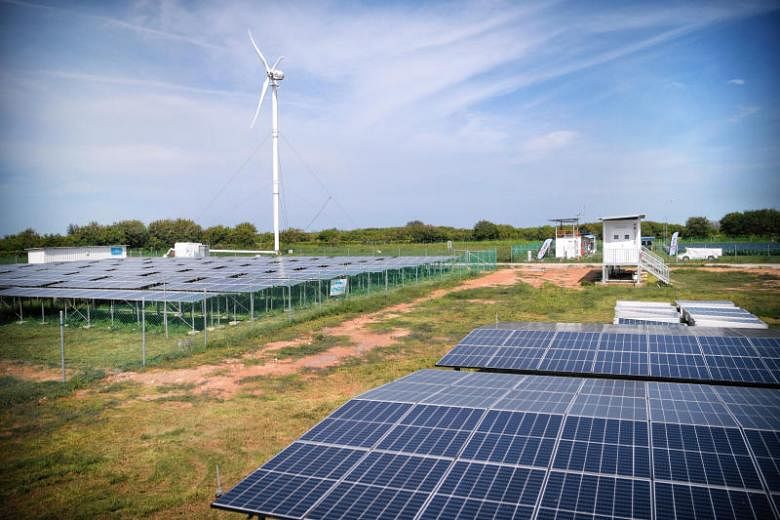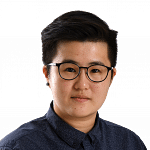SINGAPORE - Semakau Island might be known for being Singapore's only landfill site, but it is also producing 100 per cent energy.
More than 9,500 sq m of solar panels located there, coupled with a wind turbine, can power up to 350 four-room Housing Board units for a year, with a total output of 1.5 megawatt at peak capacity.
Since the end of February, the deep-sea fish farm owned by Barramundi Asia on the island has been running on 100 per cent clean energy harnessed from different renewable sources with an energy integration system.
The Renewable Energy Integration Demonstrator-Singapore (REIDS) - a project initiated by Nanyang Technological University (NTU) - is the largest system of interconnected micro-grids in South-east Asia.
Micro-grids are used to generate power in remote areas where it might be difficult to build transmission lines and wires.
The central hub of the REIDS system draws energy from the micro-grids which are powered by various sources such as wind turbines and solar panels, and redistributes any excess energy unused by one micro-grid to another.
By integrating multiple energy sources - which are heavily dependent on conditions of nature- the system is able to generate power more consistently.
The first of its kind in South-east Asia, the micro-grid system serves as a platform for companies to test research projects that are powered by renewable sources of energy in real world conditions.
To date, the university has set up partnerships with 30 local and international companies on the REIDS project, including British turbine supplier Rolls Royce, and French corporations Engie and Schneider Electric.
Four out of the eight micro-grids are currently up and running.
Mr Romain Migne, project manager at French electric utility company EDF, which opened its lab on the island five years ago, said that Singapore is a suitable location for the company to test its technologies for electric-powered cars in hot and humid conditions - which could be tough for electrical equipment.
"What is really interesting for us here in Singapore is the tropical environment," he said. "If the batteries work in Singapore, basically it will work everywhere in the world."
"The main driver (for us coming here) was really to have a tough environment to play with, and to toughen our technologies."
Senior Parliamentary Secretary for Trade and Industry, Dr Tan Wu Meng, who toured the REIDS site on Friday (May 10), said that Semakau Island was a "tough environment" for technology because of its remoteness.
But it had been turned into an opportunity in the case of the REIDS project, as companies can test their solutions away from built-up areas.
Mr Lim Horng Leong, programme manager at the Energy Research Institute at NTU, said that several new wind turbines will be added by the end of the year to the existing one on the island.
He added that two tidal generators currently undergoing test runs offshore near St John's Island and Sentosa Island will also be used at the REIDS site in future.


